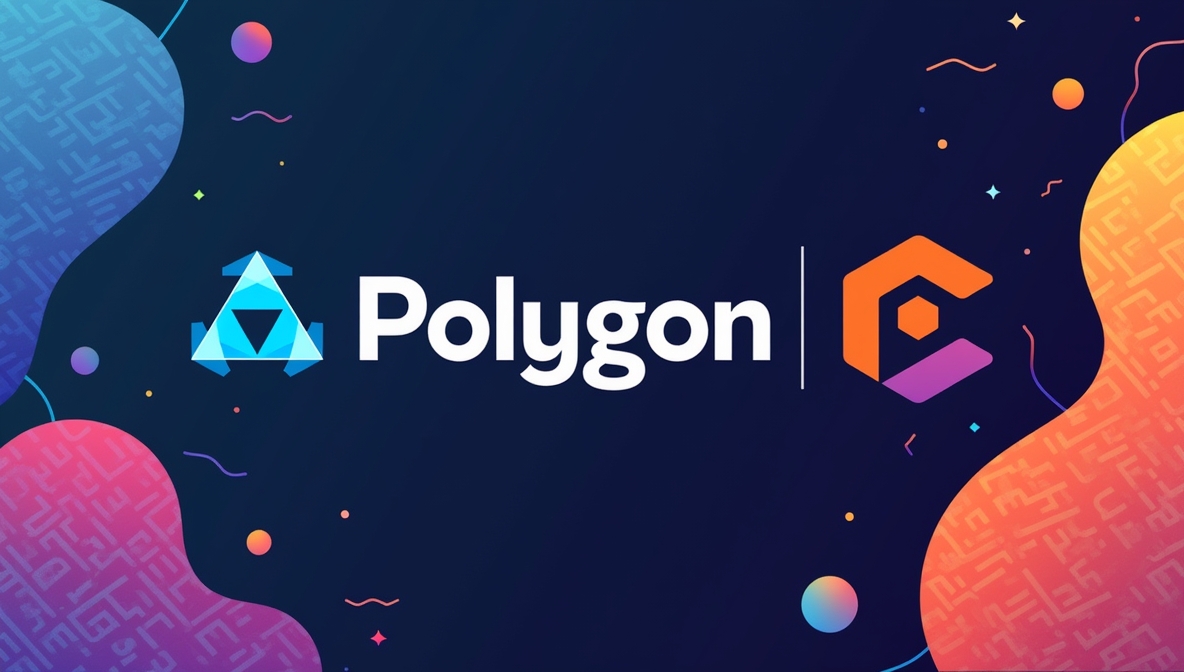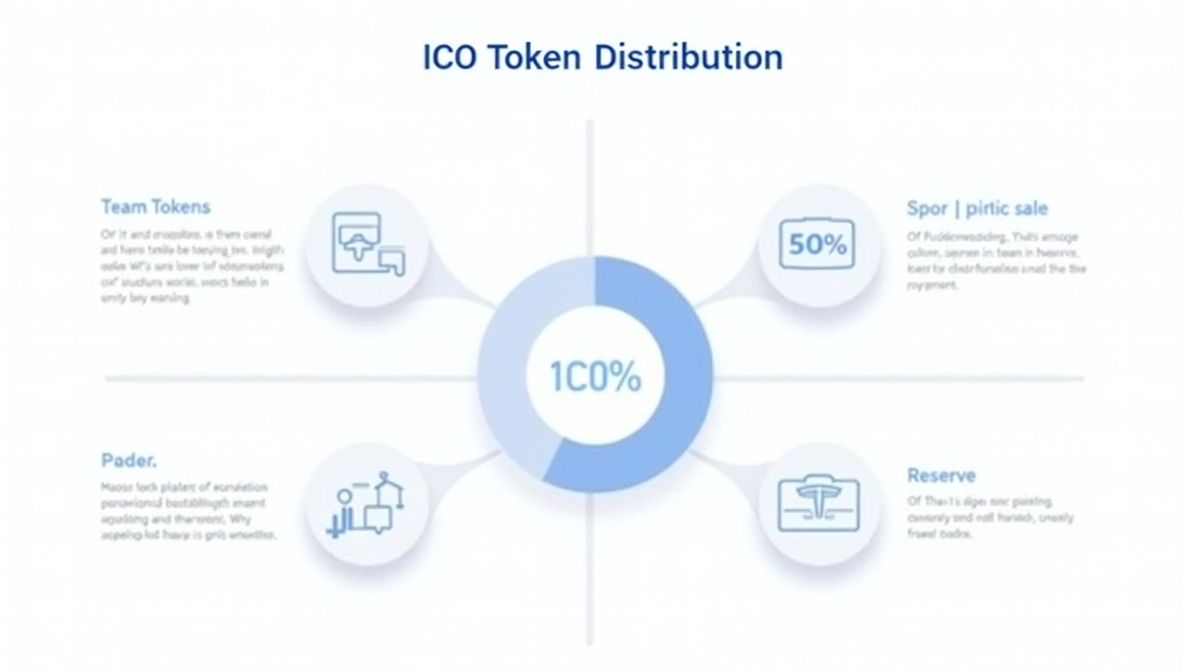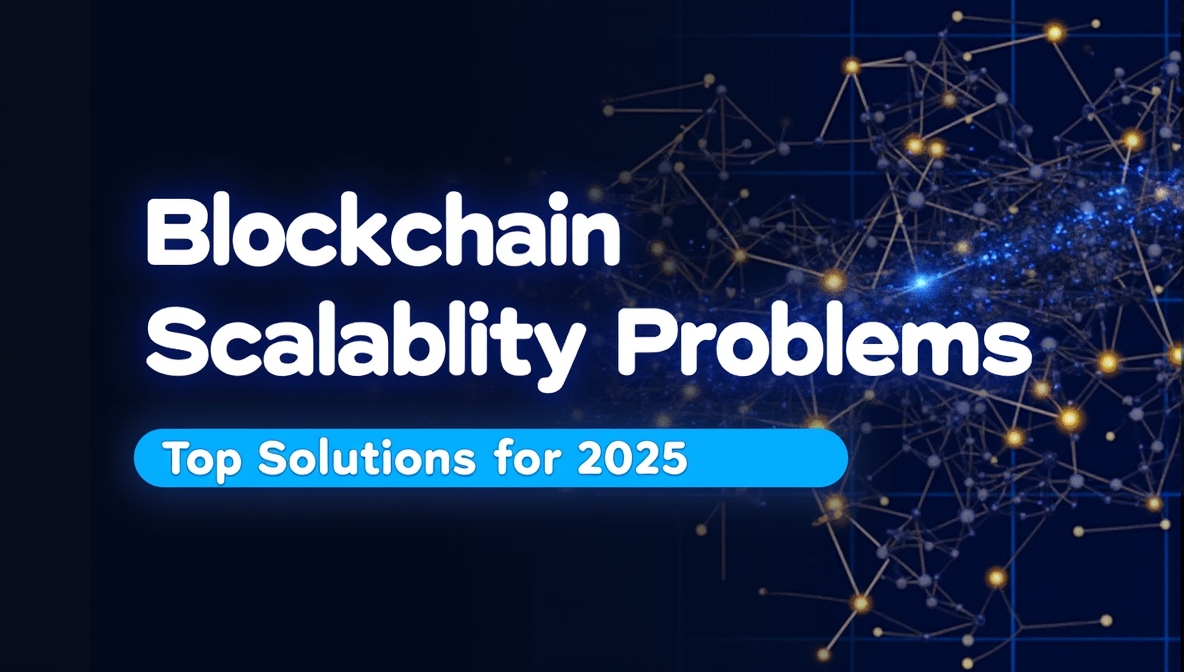Ready for a glimpse into tomorrow’s internet? Web3 is here to redefine how we create, exchange, and monetize online content. By 2025, a more decentralized, transparent, and user-driven digital world—powered by blockchain, artificial intelligence, and tokenization—will reshape finance, gaming, social media, and beyond. With this evolution come transformative opportunities and fresh challenges. The latest Web3 trends highlight the unstoppable momentum behind decentralized applications (dApps), real-world asset tokenization, and sustainable solutions that transcend traditional tech boundaries.
If you’re aiming to stay relevant in this fast-changing landscape, understanding Web3 trends 2025 is your ticket.
This article will explore the core innovations—ranging from AI-infused smart contracts to regulatory clarity—that are fueling Web3’s worldwide expansion. Let’s dive into the key developments poised to define the Web3 ecosystem and your role within it.
The Current State of Web3 in 2025
By 2025, Web3 has evolved from an experimental niche into a thriving global movement. According to the latest industry reports, over 3,200 startups and 17,000 companies contribute to this decentralized revolution. Nearly 460,000 professionals power these initiatives, and employment in the sector grows every quarter. Notably, the USA, UK, India, UAE, and France serve as major hubs, each fostering innovation by integrating blockchain solutions into diverse fields like finance, healthcare, logistics, and government services.
Such remarkable growth thrives on hefty financial support. Venture capital firms like Andreessen Horowitz, Polychain, and Coatue Management have poured billions of dollars into Web3. Their confidence underscores the technology’s transition from a speculative curiosity to a business-critical tool. Governments have also taken notice, exploring pilot programs and policy frameworks that reflect the growing acceptance of decentralized technologies.
This acceptance proves especially vital as more industries adopt decentralized networks for data management, supply chain optimization, and cross-border transactions. Moreover, as these solutions integrate with artificial intelligence, advanced analytics, and automation, they pave the way for Web3 platforms that drive efficiency at scale. In short, Web3 is now less about speculation and more about tangible use cases—and the market is responding with enthusiasm.
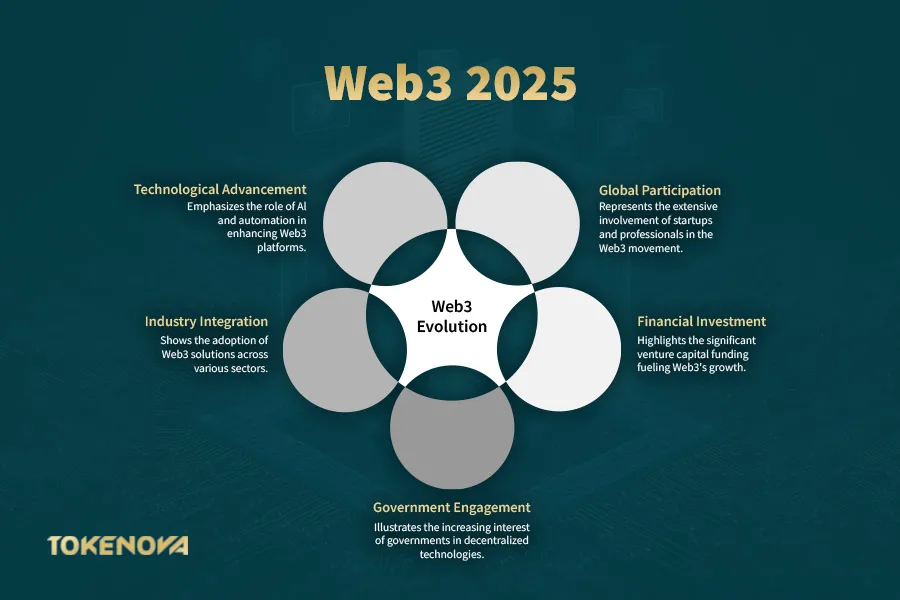
Tokenization of Real-World Assets (RWA)
Among the latest Web3 trends, real-world asset (RWA) tokenization stands out for its potential to revolutionize investment. Converting tangible items—such as real estate, precious metals, and fine art—into digital tokens democratizes ownership, granting investors access to assets previously reserved for elite circles.
RWA tokenization is no small development. Forecasts suggest it could hit $2 trillion in market value by 2030, In a bullish scenario, this value could double to around $4 trillion. Why the excitement? Tokenization allows fractional ownership, so investors can buy smaller portions of high-value properties or collectibles. The result is greater liquidity for assets that were once notoriously difficult to trade.
These tokens live on the blockchain, where smart contracts handle compliance, manage fractional ownership details, and settle transactions automatically. This streamlined approach eliminates intermediaries, lowering fees and expediting settlements.
In 2025, traditional financial institutions have begun to lean into this model by offering tokenized securities, real estate investment trusts, and even commodity-backed tokens. The integration of blockchain into conventional finance closes historical divides and expands accessibility, creating a win-win for established firms and new investors alike.
AI and Web3 Integration: A Transformative Alliance
A fusion of artificial intelligence and blockchain has created a new generation of intelligent, adaptive Web3 platforms. Machine learning algorithms can process huge data sets in real time, enabling smart contracts that automatically adjust to market conditions, regulatory changes, or even unpredictable world events.
One critical advantage of AI integration is bolstering cybersecurity. Fraud detection systems driven by AI have reportedly cut digital fraud attempts by more than half between 2022 and 2025. Such systems analyze network data in milliseconds, identifying suspicious activities and preventing malicious transactions before they escalate. AI also helps refine smart contracts by pinpointing and patching vulnerabilities, making decentralized ecosystems less prone to exploits.
Beyond security, AI-infused blockchain networks analyze user behaviors and predict market trends, offering valuable insights. This capacity to interpret massive data pools in real time helps businesses tailor offerings, optimize supply chains, and even personalize financial products. Whether it’s improving user experiences or driving operational efficiency, the synergy between AI and Web3 underscores a crucial hallmark of the latest Web3 trends.
Blockchain Gaming: Where Ownership Meets Entertainment
Among the latest Web3 trends, Blockchain gaming represents one of the most dynamic corners of the Web3 universe. By 2025, decentralized gaming platforms have reshaped player experiences, allowing gamers to own in-game assets outright, thanks to NFTs (non-fungible tokens). This shift in ownership has spawned virtual economies where players can buy, sell, or trade unique skins, weapons, and collectibles with real monetary value.
Major studios now invest heavily in blockchain-based titles. These games use interoperable NFTs that work across multiple platforms, blurring the lines between separate gaming worlds. Imagine purchasing a rare sword in one game and using—or selling—it in another. This concept has redefined digital property rights and blurred the barriers between virtual and real-world finance.
Moreover, play-to-earn models have matured beyond mere gimmicks. Well-designed tokenomics ensure consistent user engagement, balancing the need to reward players with sustainable economic mechanisms. Some blockchain games even introduce governance tokens that empower players to vote on game development decisions. This player-centric approach fosters loyalty and community building, showcasing Web3’s capacity for democratizing not just finances, but entertainment as well.
Regulatory Clarity: The Road to Mainstream Acceptance
One factor propelling the latest web3 trends into the mainstream is increasingly clear regulation. Governments worldwide have recognized the economic potential of blockchain technologies, prompting a wave of new policies in key markets like the U.S., UK, and Asia. With a combination of forward-thinking guidelines and robust consumer protections, these regulatory frameworks reduce uncertainty for businesses and investors.
In the United States, changes in leadership at the Securities and Exchange Commission have emphasized the importance of balanced regulation over punitive action. Instead of stifling innovation, the approach now revolves around guiding projects to comply with existing financial statutes without hindering creativity. Legislative acts, such as the widely discussed “FIT 21,” propose detailed standards that clarify the status of digital assets, define stablecoin regulations, and outline best practices for decentralized platforms.
Such developments create a more uniform global regulatory environment, spurring institutional investment. Traditional banks and corporate giants are increasingly comfortable deploying capital into blockchain ventures, confident they won’t face sudden legal roadblocks. For startups and established firms, this emerging regulatory clarity means lower compliance costs and a smoother path to international expansion.
Decentralized Social Media: Redefining Community and Control
Censorship concerns, data privacy issues, and frustration with ad-driven models have made decentralized social media platforms a compelling alternative by 2025. Rather than relying on centralized servers that can harvest user data, these blockchain-based networks give individuals direct control over their information. You decide what to share, who can see it, and how it’s monetized.
Such autonomy aligns with the broader ethos of Web3: user sovereignty. Creators, too, reap the rewards. Unlike traditional platforms that take hefty percentages of ad revenue or demonetize content arbitrarily, decentralized models often split revenue directly through smart contracts. Additionally, tokenized reward systems foster user engagement. When you contribute quality content, you can earn native tokens that hold real-world value, encouraging vibrant, community-led ecosystems.
Free from corporate oversight, users can also influence the platform’s development through decentralized autonomous organizations (DAOs). These governance mechanisms let community members propose changes or improvements, vote on them, and decide how to allocate platform funds. As concerns about data privacy grow, decentralized social media stands poised to reshape how we connect, share ideas, and influence public discourse.
Stablecoins and the Evolving Financial Landscape
Stablecoins act as the vital bridge between fiat currency and the crypto market. Pegged typically to the U.S. dollar, these digital assets mitigate volatility, providing a stable store of value and medium of exchange. By 2025, stablecoins facilitate a significant share of global cross-border transactions, reducing reliance on legacy systems and offering near-instant settlement times.
Moreover, advanced security measures and AI-driven monitoring make stablecoins safer for both individuals and corporations. Algorithms monitor millions of transactions, sniffing out suspicious activities. If any anomalies appear, rapid response systems spring into action, freezing transactions or alerting compliance officers as necessary. This heightened security fosters trust in stablecoins, which in turn fuels broader Web3 adoption.
Regulatory backing plays a crucial role in shaping Web3, particularly in the stablecoin sector. Stablecoin issuers that comply with specific reserve requirements and auditing standards often receive preferential regulatory treatment, boosting their credibility. As a result, an increasing number of financial institutions—including global banks and payment networks—are integrating stablecoins into their service offerings. This trend highlights how the latest Web3 trends are bridging the gap between traditional finance and decentralized assets, reinforcing the Web3 ecosystem’s ongoing maturation. With enhanced regulatory clarity, businesses can confidently explore blockchain-based solutions, further accelerating Web3 adoption in 2025.
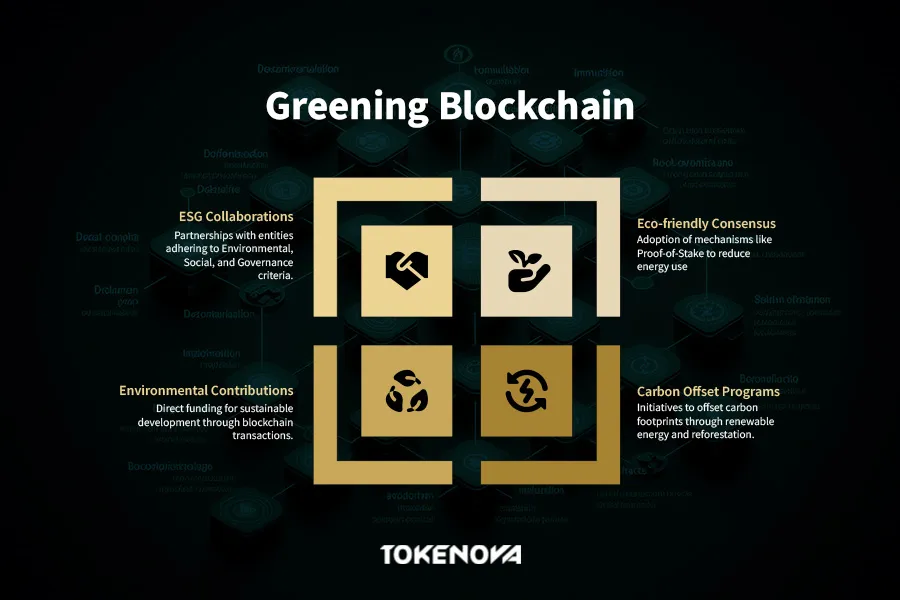
Sustainable Blockchain Solutions: The Path to a Greener Future
Early critics of blockchain often cited its energy consumption as a major drawback. In response, the latest Web3 trends emphasize eco-friendly consensus mechanisms, such as Proof-of-Stake (PoS), that drastically lower energy usage. By 2025, many leading blockchains have migrated away from Proof-of-Work, achieving up to 99% reductions in energy requirements.
In tandem, blockchain projects adopt carbon offset programs, partnering with renewable energy suppliers and reforestation initiatives. Some networks incorporate environmental contributions directly into their protocol. A small fraction of every transaction fee, for example, can fund sustainable development, creating a built-in incentive structure that rewards eco-conscious practices.
This shift also draws mainstream entities committed to Environmental, Social, and Governance (ESG) criteria. Collaborations with philanthropic organizations and governmental bodies further anchor blockchain as a force for good. For businesses, this green transformation alleviates concerns about the environmental impact of on-chain operations, encouraging widespread, responsible integration.
Mobile-First Web3 Strategies: Accessibility for Everyone
Smartphones have become the primary gateway to the internet for billions, especially in emerging markets. Recognizing this reality, Web3 projects in 2025 focus on delivering mobile-first experiences that simplify blockchain interactions. User interfaces now prioritize intuitive layouts, minimal jargon, and frictionless onboarding.
Mobile wallets, in particular, come packed with user-friendly features. Biometric logins replace complex private key processes, while push notifications help users keep track of essential activities—such as staking rewards or NFT marketplace updates. Layer-2 solutions further streamline mobile transactions by reducing fees and improving speed, ensuring that decentralized apps (dApps) function fluidly on less powerful devices.
Progressive Web Apps (PWAs) bridge the gap between native apps and mobile web browsers. Even smartphones with limited storage can access feature-rich dApps without cumbersome downloads. This universal accessibility accelerates the global expansion of Web3 by inviting wider user participation. As mobile tech advances, so does its capacity to harness blockchain’s transformative power in everyday life.
Future Outlook: Beyond 2025
Looking past 2025, the Web3 ecosystem shows no sign of slowing. Several critical developments will likely define its trajectory:
- Interoperability: We can expect enhanced communication among different blockchains, enabling seamless asset transfers and data exchanges across networks.
- Post-Quantum Security: As quantum computing advances, quantum-resistant cryptography will ensure blockchain systems remain secure in the face of next-gen computational threats.
- Web3-IoT Convergence: Decentralized networks could facilitate secure, automated transactions between devices, revolutionizing sectors like supply chain, manufacturing, and smart cities.
- Deepening Regulatory Maturity: Nations worldwide are introducing nuanced policies that embrace innovation while safeguarding consumers. This stable environment incentivizes institutional investment.
- Metaverse Integration: The metaverse—a shared virtual space that merges the physical and digital—may expand rapidly with blockchain-based ownership, identity systems, and marketplaces at its core.
Businesses looking to leverage these future trends must invest in talent, form strategic partnerships, and remain agile in an ever-shifting market. Web3’s next chapter promises greater adoption, more advanced applications, and unparalleled opportunities to reimagine value exchange.
Tokenova: Your Gateway to Next-Level Blockchain Success
Looking to tap into the power of Web3? Tokenova serves as your dedicated consultant and advisory partner, guiding businesses through every stage of their decentralized journey. Our experts provide custom strategies, streamlined implementation plans, and ongoing support that drive real, measurable results.
- Tailored Web3 Roadmaps – We design clear, actionable strategies aligned with your specific business objectives.
- Proven Technical Expertise – Our blockchain specialists deliver robust solutions, ensuring your project’s architecture is future-proof and scalable.
- Regulatory Compliance & Risk Management – We proactively navigate complexities so you can move forward with confidence.
Sustainable Growth & Market Insights – From tokenomics to community engagement, we help you stay competitive in an ever-evolving landscape.
Conclusion
Web3 Trends in the year 2025 reveal a digital future where decentralization, tokenization, and AI-driven insights reshape how we work, play, and interact. These transformations mark a fundamental departure from traditional centralized models. From tokenizing real-world assets to forging decentralized communities, the latest Web3 trends prove this shift is both inevitable and essential. Enterprises seeking growth should grasp these developments now—invest in blockchain expertise, explore new revenue streams like NFTs or DeFi, and champion user-driven platforms. The journey toward decentralization has already begun, and those who adapt will thrive. By 2025, Web3’s impact will be impossible to ignore, underscoring the significance of today’s strategic decisions in shaping tomorrow’s success.



